

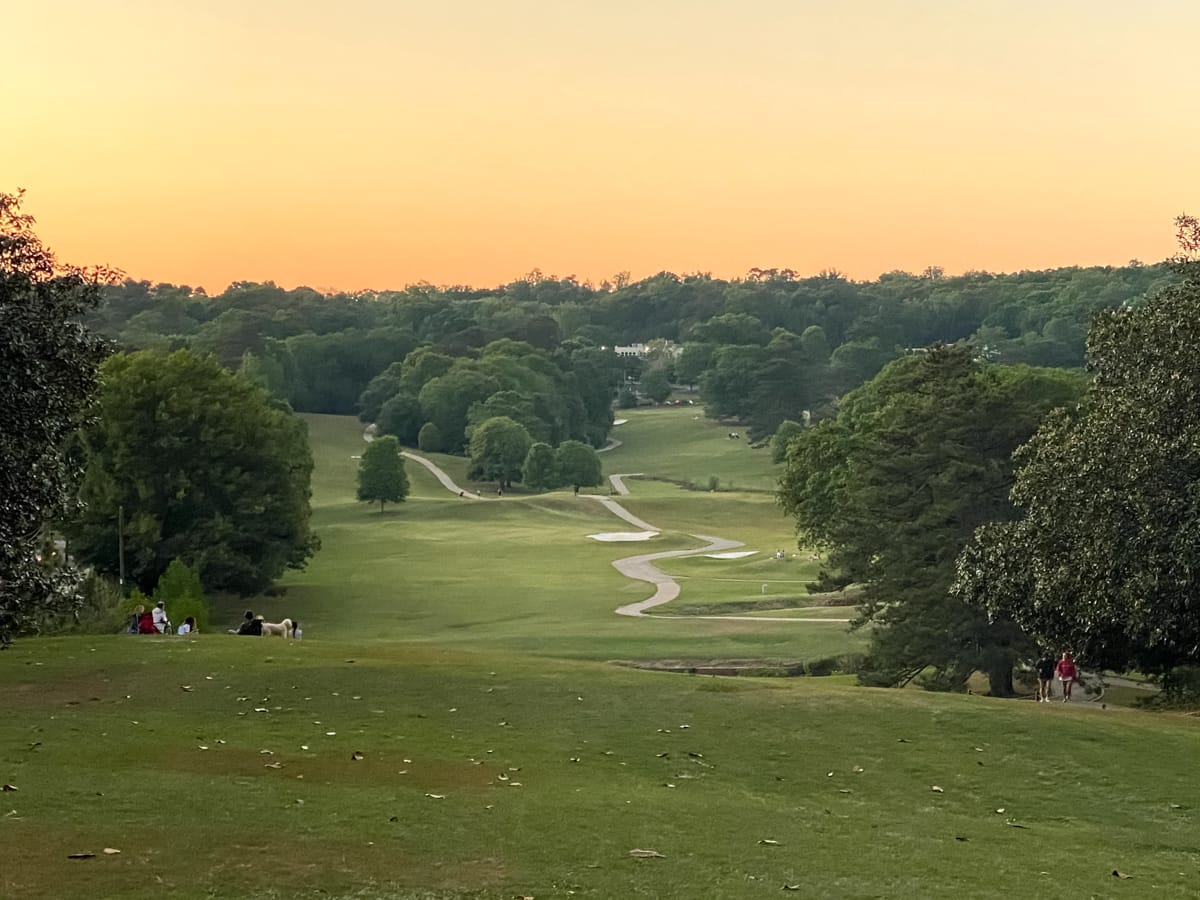
Omar Toledo, a stock trader who lives in Atlantic Station, boarded a six-wheel, electric-powered contraption called a summerboard in the middle of Chastain Park Golf Course’s sloped first hole on Tuesday. It was 83 degrees and sunny at 5 p.m., the glassy high-rises of Buckhead shining beyond the trees. The only rush-hour traffic in the area was found along the northern edges of the park, where patrons jockeyed for parking spaces. Everyone seemed to carefully keep their distance from strangers, which wasn’t difficult, given the enormity of space afforded by a golf course without golfers. Toledo’s friends had tipped him off that Chastain Park, in a time of novel coronavirus restrictions, has been like Piedmont Park, minus the crowds. “It feels good—definitely worth the trip,” he said, before cruising off toward Hole 2, as if snowboarding on a cart path.
The global pandemic has transformed Chastain Park’s rolling fairways, waterways, and greens into what’s unequivocally one of the more gorgeous, versatile, and massive public green spaces in Atlanta—at least for now. Wandering the course today, you see Atlantans of all ages involved in every manner of outdoor activity not involving clubs and golf carts. In interviews, many echoed what’s become an impassioned if still grassroots idea: permanently converting the course into a public park (a “Free Chastain Park” sentiment, if you will); or at least reducing it to a nine-hole course so more acreage is accessible to nongolfers, as with the recent retooling of Bobby Jones Golf Course, now operated by an outside foundation. City and park officials are hardly calling the idea quixotic or impractical, though it’s too early to talk potential funding and other logistics. Another contingent of locals, however, is eager to have its historic and popular golf course back, even if they don’t play.



“This is spectacular, walking on the greens and the cart path,” said Buckhead resident Nancy Cowles, gesturing across the hills. “There’s all different ways to go—loop around here, over there.”
Her husband isn’t so sure.
“My thought is, it’s great for now, but it needs to stay a golf course,” said barefooted Brooks Cowles, walking their dog, Lucy, on the soft Bermuda. “There’s a lot of people who can’t join private clubs around here. It’s hard to get in. A lot of golfers rely on this as a public course.”
Converting the golf course wouldn’t be without local precedent. Piedmont Park, which has drawn national criticism for its social-distancing-averse crowds this month, featured a nine-hole course along 10th Street (with part of today’s Park Tavern serving as the clubhouse) until it closed in 1979 for more public parkland.
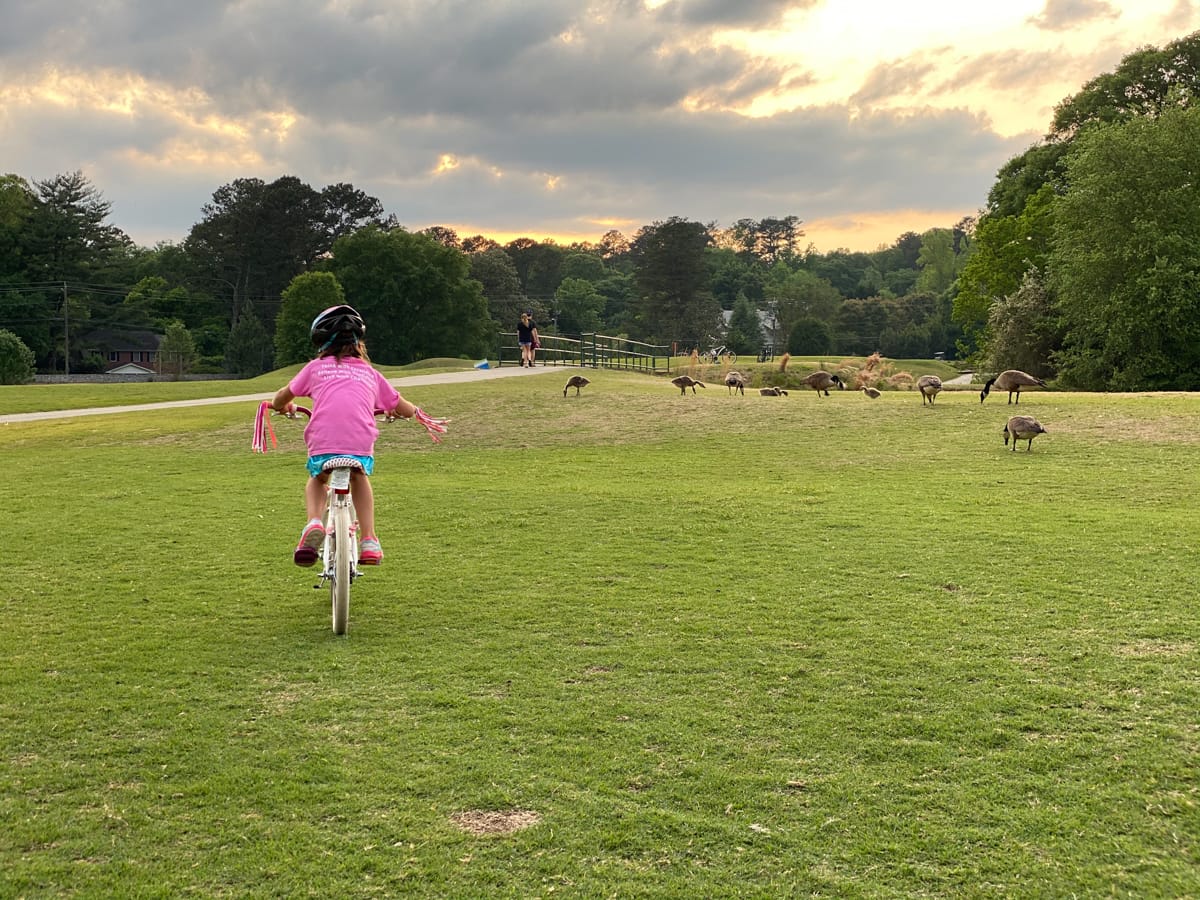

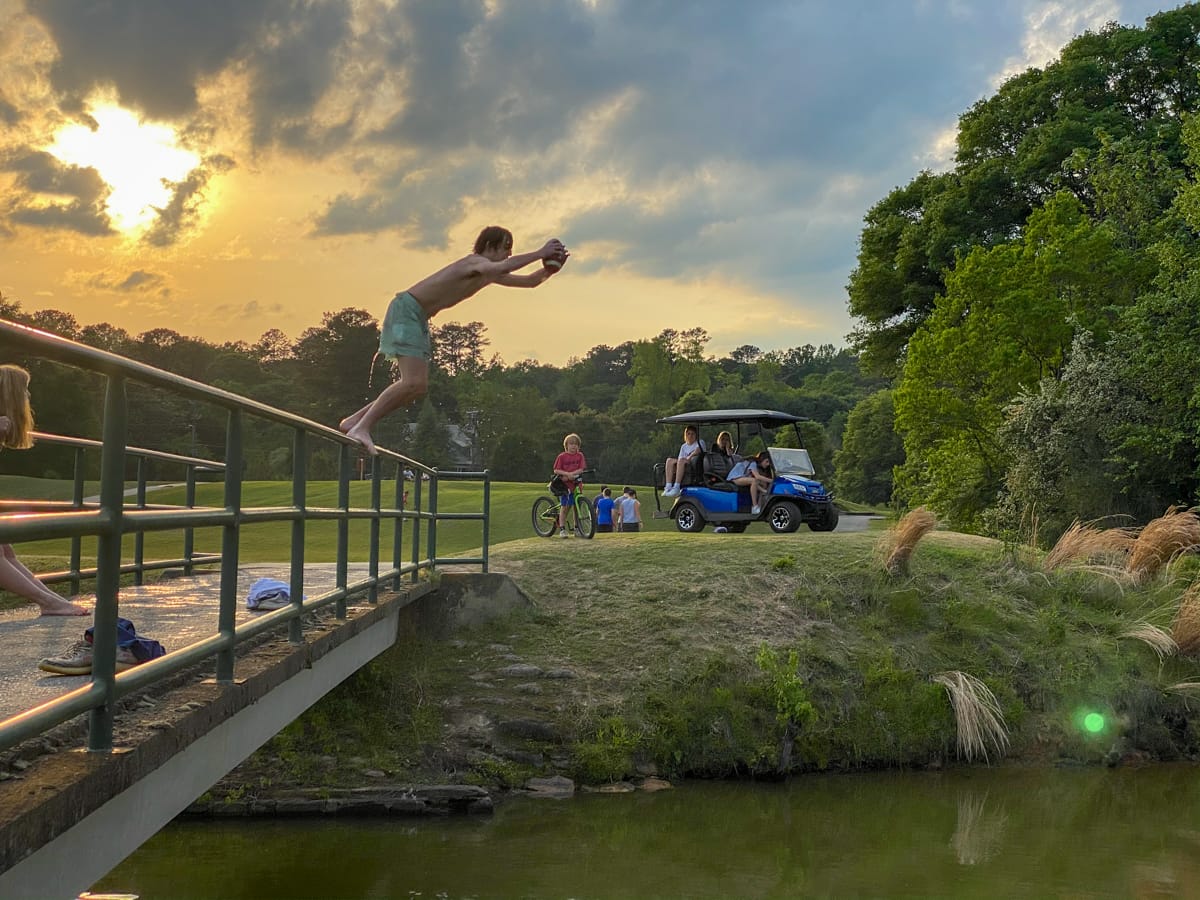
Today, Chastain’s 268 acres make it Atlanta’s largest city park—more than double the size of Grant Park (the city’s oldest) and 100 acres bigger than Piedmont. But the vast majority is reserved for golfers under normal circumstances. The holes are ringed by a walking path used by an estimated 500,000 people annually, which is the amenity that drew heat for being crowded in the early days of shelter-in-place, before the residents of Chastain Park took over the golf course for picnicking, Frisbee-tossing, and anything else within reason.
The golf course, which dates to 1937, was designed by H. Chandler Egan, a colleague of Bobby Jones who also helped craft Pebble Beach in California. It’s the only city-operated golf course north of Candler Park, with rates topping out at $25, including carts, and weekday early-bird specials of $10 rounds. City officials consider it Atlanta’s top public course. But the district’s city council representative—J.P. Matzigkeit, who cofounded the Chastain Park Conservancy and helped create the park’s 2008 masterplan—said he’s open to exploring “whether we could share” and have “a historic golf course and a public green space” together. The golf course, as Matzigkeit pointed out, is said to be Georgia’s busiest, with revenue that supports other courses across the city.
“Every time I walk around the park, people share their thoughts about the golf course with me,” Matzigkeit wrote in an email to Buckhead.com. “People are passionate about both keeping the golf course exactly as it is, as well as turning the golf course into green space. I represent both groups of people.”
The Chastain Park Conservancy’s executive director, Rosa McHugh, declined an interview but supplied a statement that reads, in part, that her organization “believes the community deserves the opportunity to discuss [a new park] concept. However, we stress the importance of having all the facts on the table… [W]e would like to encourage the discussion to explore creative shared public uses and opportunities for activating acres of underutilized parkland for passive recreation.”
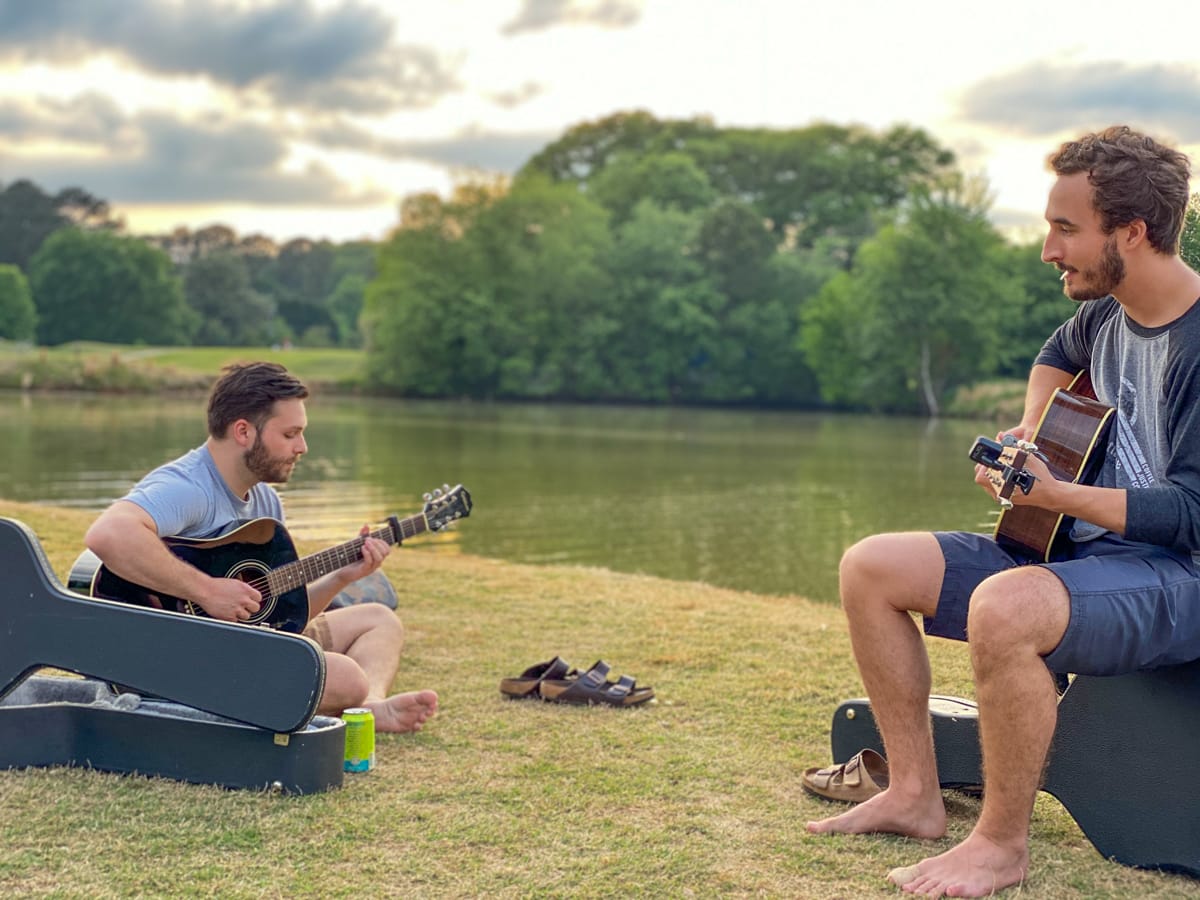
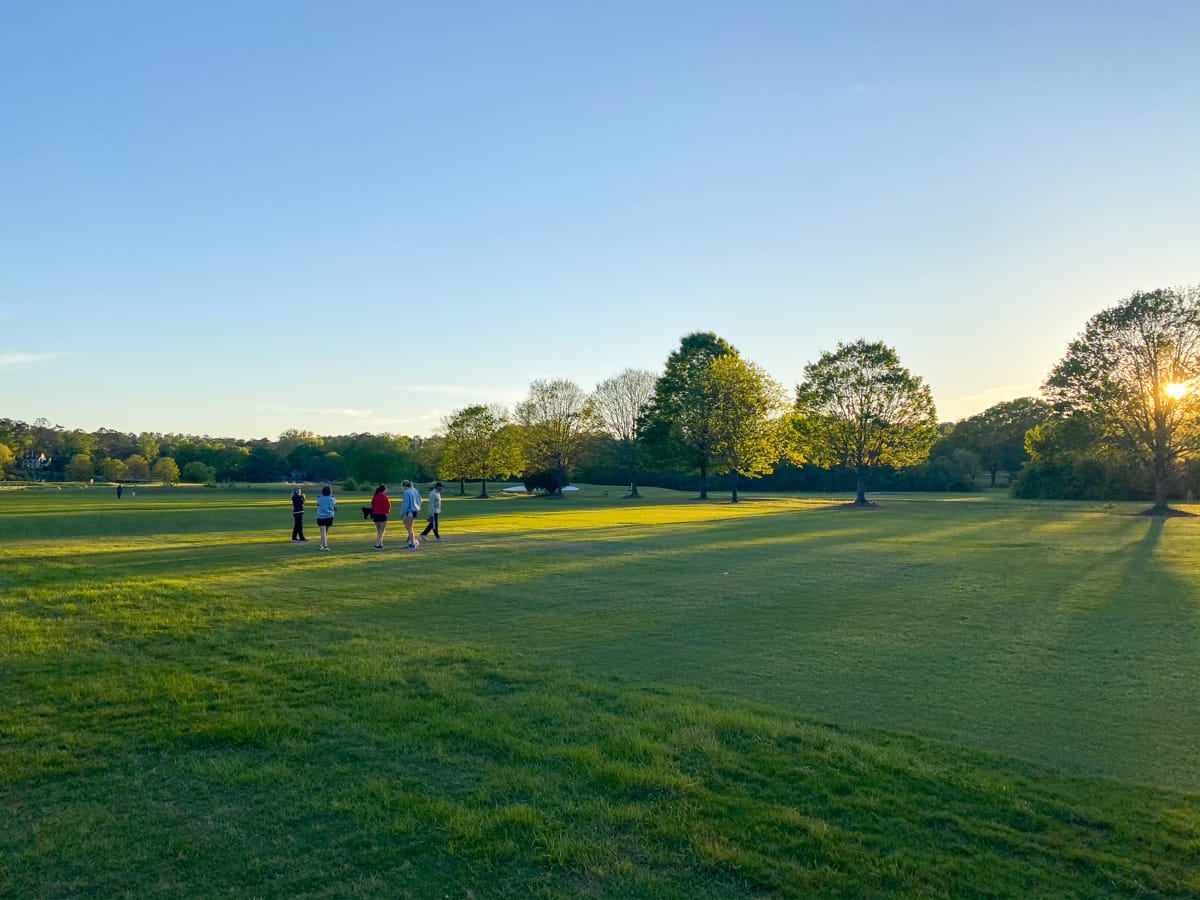
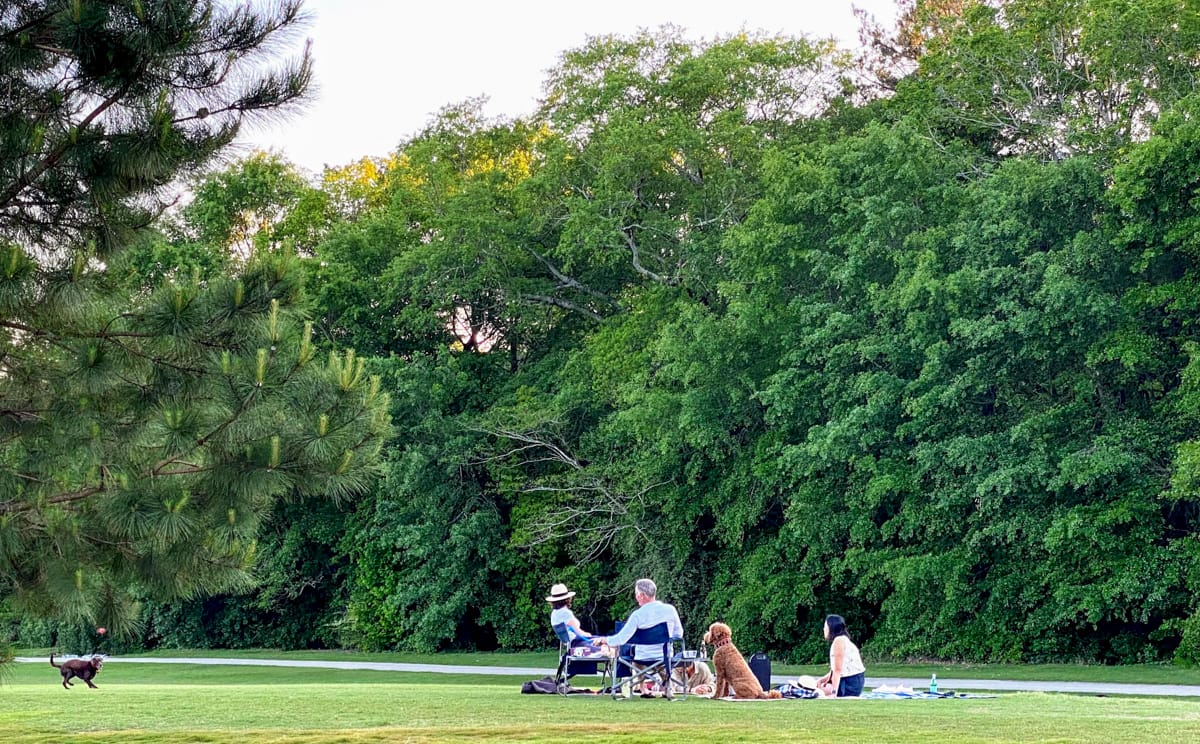
Since COVID-19 upended everyday life in America, that recreation at Chastain has included sunbathing in sand traps, caravans of families on bikes, kids playing lacrosse and riding scooters, yoga and dancing classes, outdoor dining from nearby food trucks, fitness boot camps, swimming in the pond and Nancy Creek, and even teens hosting student council meetings. For nongolfers, it’s a totally new perspective on Chastain, offering what Buckhead Realtor Ben Hirsh called a “lightbulb moment” for the community.
“Buckhead is blessed with so much greenery and tree canopy, but there’s something about a beautiful public park that transcends even a spacious private yard,” said Hirsh. “It’s the prettiest park in Atlanta, and because I’m not a golfer, I was not aware of that until now. If this becomes permanent, I could see a possible increase in property values for the Chastain Park neighborhood as a result.”
Elsewhere on the park tour, frequent patrons Will Luckey and his son Tristan were walking their Shih Tzu, Dipper, around the pond. “It’s never been like this,” said the elder Luckey. “It’s beautiful, a great place to be able to come, with all this going on.
“To share the openness of it [permanently] wouldn’t be too bad,” he continued. “Pebble Beach in California, it’s a public facility. You can be playing there, and 300 people are walking around watching you. Maybe [having parkland] around the perimeter’s and stuff, that’d be cool.”
On a course bridge, a couple who requested anonymity were enthralled with watching a water snake ambush minnows. They live a block away and have used the newly accessible spaces every day since March. Running on grass, the wife said, has proven healthier for her.
“For all these kids, it’s unstructured, free play, and they’re using their imaginations,” she said. “We’ve had such a beautiful spring this year, and this space was perfect, but I wondered what happens when it’s July and 90 [degrees]? Will people still come out? Well, they still go to Piedmont Park.”

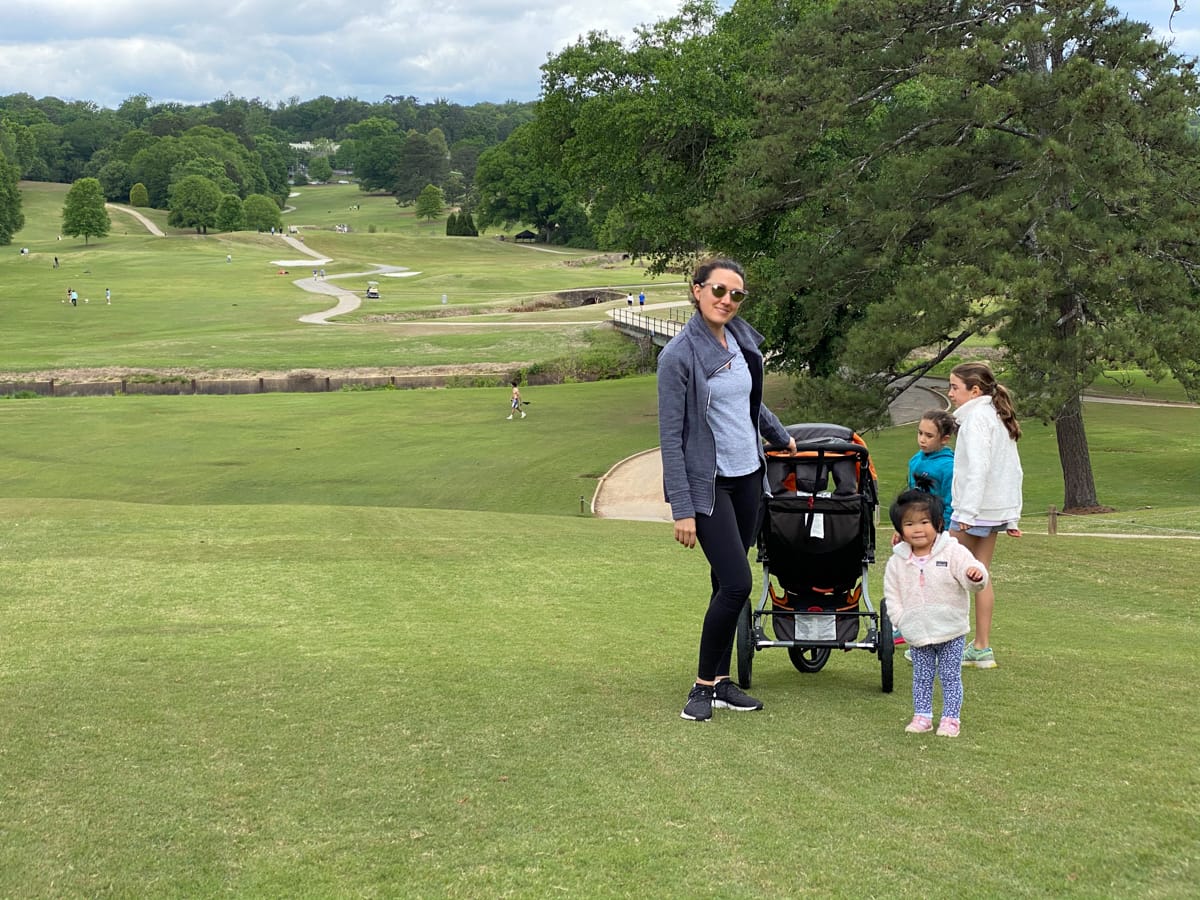
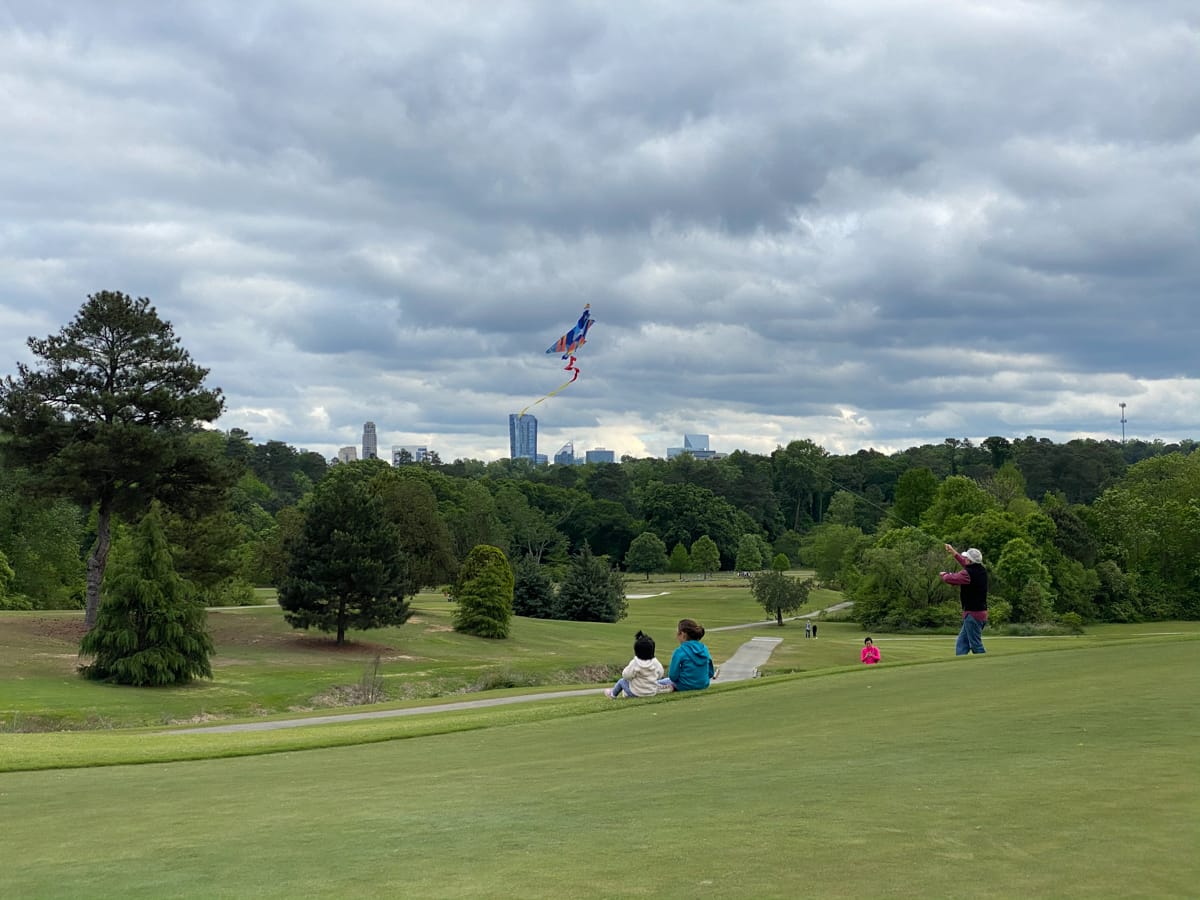
Her husband added: “It’s been incredible, and there’s two thoughts on it: Most people love it, but they’re weary of it becoming permanent and that there will be, you know, bad elements coming in. That was like the big thrust of everybody’s thought process.”
Her: “I have heard on Nextdoor Chastain complaints about trash. Where? I’ve found an earring and an ear pod, that’s all… It’s so clean that I would notice that.”
Him: “Will [the park expansion idea] gain traction? I don’t know. There are some big hitters over here who can make stuff happen, you know.”
Her: “I wonder which side they’re on? Probably the big-hitters aren’t golfing here.”
In the short term, exactly how long Chastain frolickers will replace golfers isn’t clear. Matzigkeit said an advisory panel established by the mayor’s office is expected to report findings and bring recommendations to the council about how and when to open city park operations by May 15. The council, for now, is in wait-and-see mode, he said.
Whatever happens, Britton McLeod, who’s lived around the corner from Chastain Park for seven years, will look back fondly on one aspect of the pandemic malaise.
“We’ve always loved this area, always thought it was special, but now we feel the neighborhood can truly come together,” said McLeod. “It’s like having Piedmont Park in north Buckhead, and that’s very unique to the city. I really feel like it’s brought our community together in a healthy way.”